
Below is a video of our hospital kiosk, please watch it crefully to learn more
Watch the video above and you will find that our hospital kiosk is worth having, whether it is the exquisite appearance design, stable and efficient working performance, fast and sensitive response speed, smooth operation experience. Get it today and double your business efficiency. Contact us to place an order to enjoy the latest price discount.
| Component | Description | Manufacturing Process | Materials Used |
|---|---|---|---|
| Touchscreen Display | Interactive screen for user input | Assembled with capacitive or resistive touch sensors | Glass, LCD, touch sensor |
| Housing/Enclosure | Protective case for internal components | CNC machining or injection molding | Steel, aluminum, or durable plastic |
| Processor & Motherboard | Core computing unit that powers the kiosk | PCB assembly, component soldering | Silicon chips, resistors, capacitors |
| Payment Terminal | Device for processing payments (card, NFC, etc.) | Assembled with secure encryption modules | Metal, plastic, electronic components |
| Printer | Prints receipts, forms, or tickets | Assembly of mechanical and electronic parts | Plastic, metal, thermal paper components |
| Software Integration | Custom software tailored for hospital services | Developed and loaded into the system | Custom code, operating system |
A hospital kiosk operates as a self-service station designed to streamline various patient interactions and administrative tasks. Upon arrival, patients use the touchscreen interface to check in for appointments by entering personal details or scanning a QR code. The kiosk can also update patient information, such as contact details or medical history, directly into the hospital's database. If payment is required, the kiosk securely processes transactions via credit/debit cards or mobile payment options, providing receipts through an integrated printer. Additionally, hospital kiosks offer wayfinding assistance, guiding patients to their specific departments or rooms. All interactions are processed in real-time, ensuring that data is securely transmitted to the hospital's systems, enhancing operational efficiency and reducing wait times for patients. The user-friendly design and integration with hospital management software make the kiosk an essential tool in modern healthcare facilities.
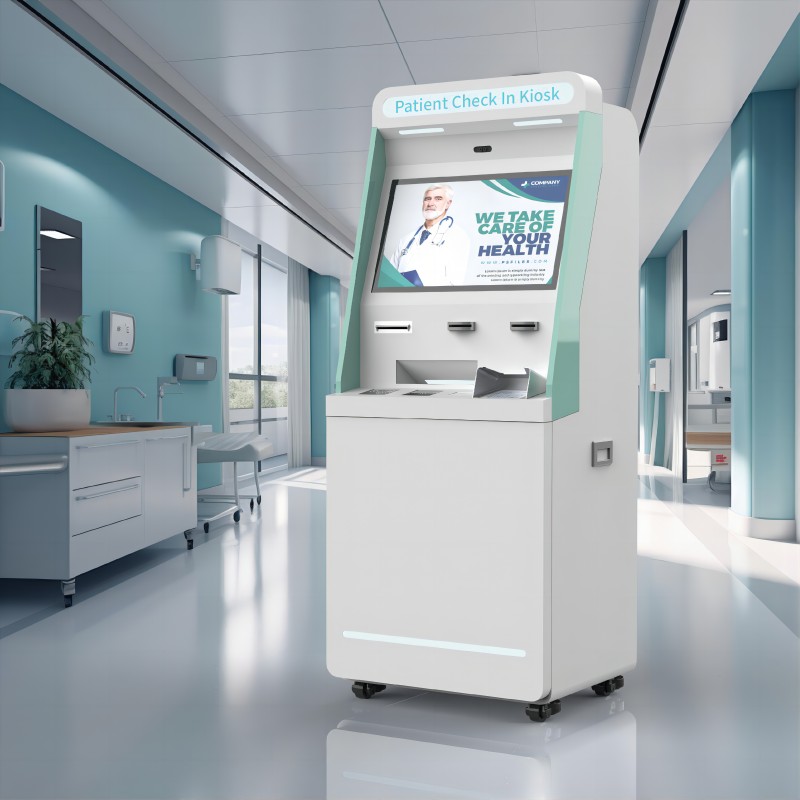
Check-in for Appointments: Enter your personal information or scan a QR code to quickly check in for your scheduled appointment.
Update Personal Information: Use the kiosk to update or verify your contact details, insurance information, or medical history.
Make Payments: Securely pay for services using credit/debit cards or mobile payment options directly through the kiosk.
Print Documents: Print out appointment confirmations, receipts, or other necessary documents using the kiosk’s integrated printer.
Access Wayfinding Services: Get directions to your department or room within the hospital through the kiosk’s interactive map feature.
Schedule Future Appointments: Use the kiosk to book or confirm future appointments, streamlining your healthcare experience.

Patient Check-in: Streamlines the process of checking in for appointments, reducing wait times and easing the workload of front desk staff.
Billing and Payment: Facilitates secure payments for medical services, enabling patients to settle bills quickly and efficiently.
Wayfinding Assistance: Provides interactive maps and directions, helping patients and visitors navigate the hospital complex.
Appointment Scheduling: Allows patients to schedule, reschedule, or confirm future appointments directly through the kiosk.
Patient Information Updates: Enables patients to update their contact details, insurance information, and medical history on-site.
Prescription Refill Requests: Allows patients to request prescription refills, reducing the need for direct interaction with pharmacy staff.
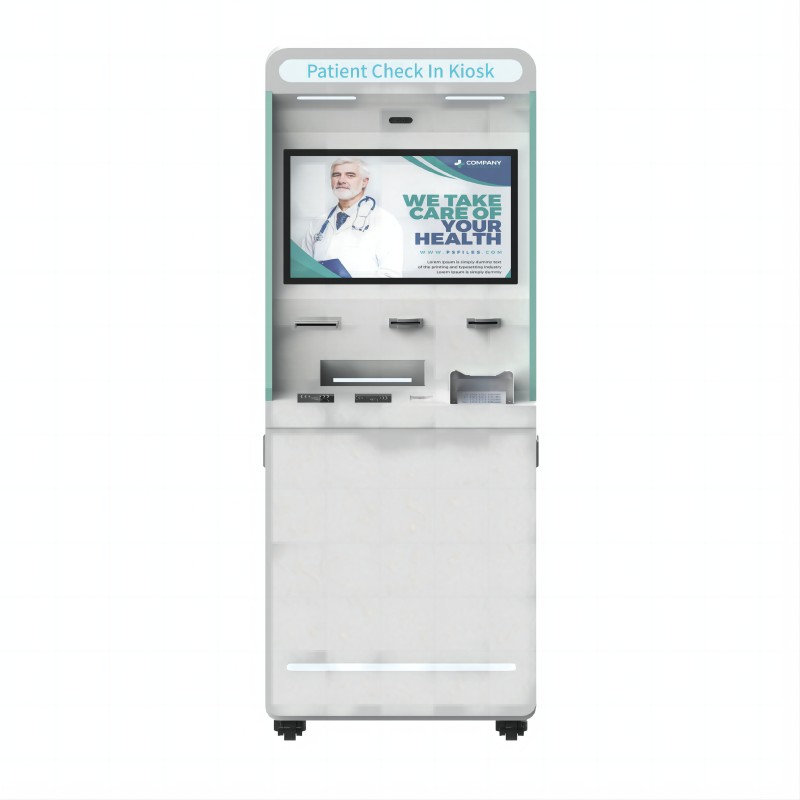
User Interaction: Customers approach the movie theater kiosk and use the touchscreen display to browse available movies, showtimes, and seating options.
Selection Process: The user selects a movie, chooses a showtime, and picks their preferred seats directly on the kiosk screen.
Payment: Once the selections are made, the user proceeds to payment. The kiosk accepts various payment methods, including credit/debit cards, cash, and contactless payments like NFC.
Ticket Printing: After the payment is successfully processed, the kiosk prints out the movie tickets using its high-speed thermal printer.
Ticket Scanning: For those who pre-purchased tickets, the kiosk can scan the barcode or QR code on their mobile device or printed receipt, verifying the purchase.
Confirmation and Receipt: The kiosk provides a confirmation screen and can print or email a receipt, completing the transaction and allowing the user to proceed to their movie.
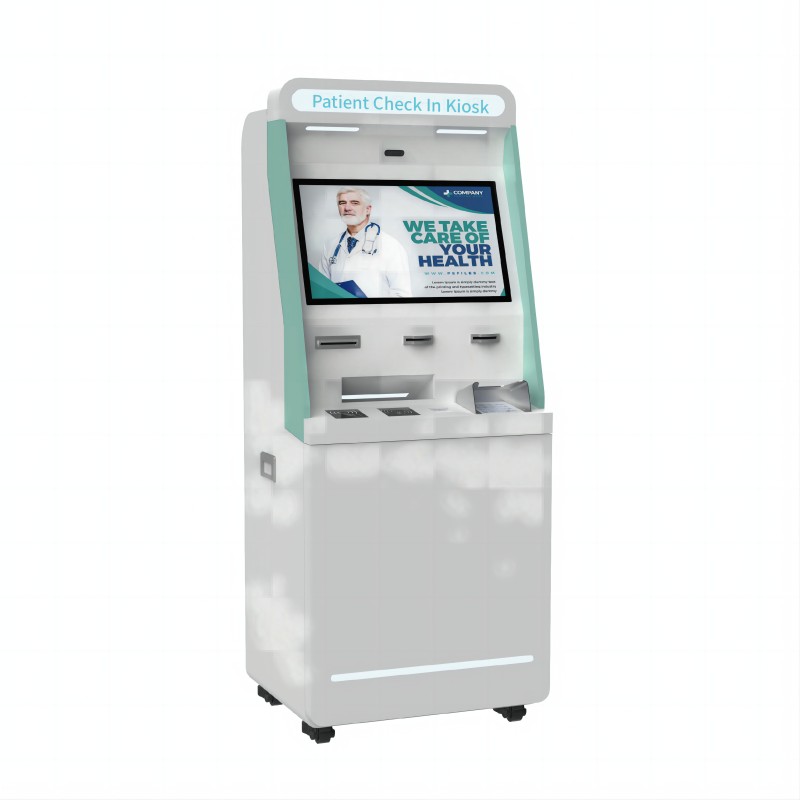
Reduces Wait Times: Streamlines check-in and payment processes, helping to reduce patient wait times and improving overall efficiency in the hospital.
Enhances Patient Experience: Offers a user-friendly, self-service option that allows patients to manage their appointments and payments conveniently.
Improves Data Accuracy: Ensures accurate patient information by allowing patients to directly input and update their personal details.
Increases Operational Efficiency: Frees up staff from routine administrative tasks, enabling them to focus on more critical patient care activities.
Supports Contactless Interaction: Provides a safer, contactless method for patients to interact with hospital services, particularly important in reducing the spread of infections.
Boosts Payment Collection: Facilitates immediate and secure payment processing, improving the hospital’s revenue cycle management.
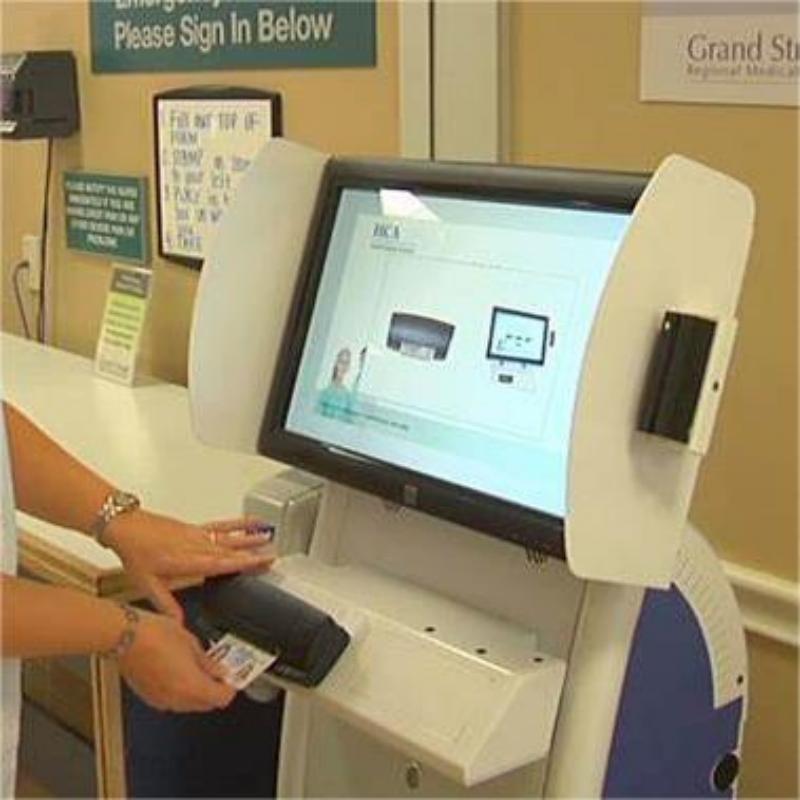
The cost of a hospital kiosk varies depending on its features, hardware specifications, and customization options, typically ranging from $3,000 to $15,000 per unit. Initial investments may also include installation, software integration, and maintenance fees. However, the return on investment (ROI) can be substantial. By reducing administrative workload and minimizing patient wait times, hospitals can operate more efficiently, leading to higher patient satisfaction and potentially increased revenue. Automated payment processing improves cash flow by reducing billing delays. Additionally, accurate data entry by patients themselves reduces errors, saving costs associated with manual data correction. Overall, the kiosk's ability to enhance operational efficiency and patient experience often results in a positive ROI within a short period.
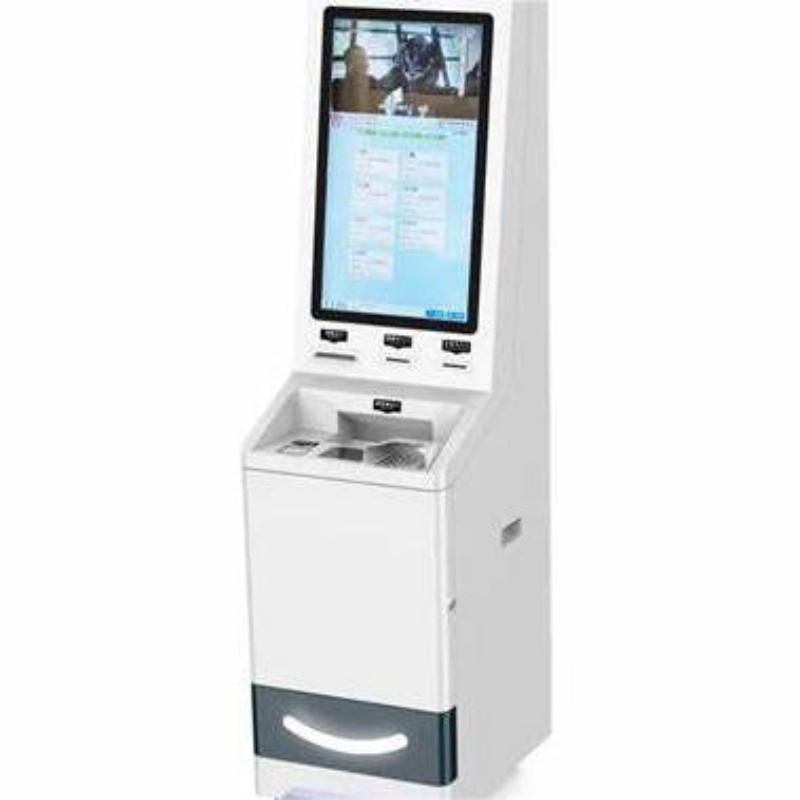
Integration with Existing Systems: Ensure the kiosk can seamlessly integrate with the hospital’s current management systems, including patient records, billing, and scheduling software.
User-Friendly Interface: Choose a kiosk with an intuitive and easy-to-navigate interface that caters to patients of all ages and technical proficiency levels.
Compliance and Security: Verify that the kiosk complies with healthcare regulations, such as HIPAA, and offers robust security features to protect patient data.
Customization Options: Consider the extent to which the kiosk can be customized in terms of design, functionality, and accessibility to meet the specific needs of your hospital.
Maintenance and Support: Evaluate the availability of ongoing technical support, software updates, and maintenance services to ensure long-term reliability.
Cost and Budget: Assess the total cost of ownership, including installation, software licensing, and potential upgrades, to ensure it fits within the hospital’s budget.
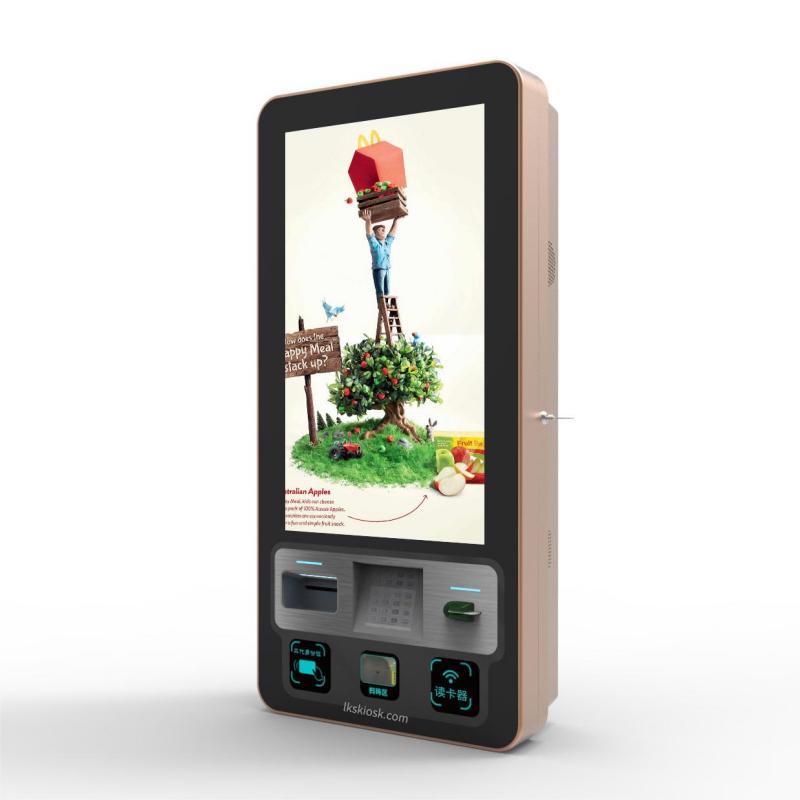
| Type | Sizes | Design Features | Price Range |
|---|---|---|---|
| Patient Check-in Kiosk | 19" to 32" Touchscreen Display | Sleek, compact design, ADA compliant | $3,000 - $7,000 |
| Payment Kiosk | 21" to 27" Touchscreen Display | Integrated card reader, receipt printer | $5,000 - $10,000 |
| Wayfinding Kiosk | 32" to 55" Touchscreen Display | Large, interactive display, map features | $7,000 - $12,000 |
| Information Kiosk | 19" to 27" Touchscreen Display | Simple design, wall-mounted options | $3,000 - $6,000 |
| Appointment Scheduling Kiosk | 21" to 27" Touchscreen Display | Built-in keyboard, user-friendly interface | $4,000 - $8,000 |
| Prescription Refill Kiosk | 19" to 24" Touchscreen Display | Barcode scanner, integrated communication features | $4,000 - $9,000 |
Assess Needs and Goals: Determine the specific needs of your hospital, such as reducing patient wait times, improving data accuracy, or offering contactless services. Define the goals the kiosk should achieve.
Research Vendors: Identify and research reputable kiosk manufacturers that specialize in healthcare solutions. Compare their offerings in terms of customization, support, and pricing.
Evaluate Features and Specifications: Review the specifications, including screen size, design, accessibility features, and software integration capabilities. Ensure the kiosk meets the hospital's requirements.
Request Demos and Proposals: Contact selected vendors to request product demonstrations and detailed proposals. Evaluate their ability to integrate with your existing systems and the ease of use for patients.
Consider Total Cost: Calculate the total cost of ownership, including hardware, software, installation, and ongoing maintenance. Ensure the pricing aligns with your budget while meeting quality and feature requirements.
Make the Purchase: Finalize the purchase by negotiating terms, securing financing if necessary, and placing the order. Ensure the vendor provides comprehensive training for staff and patients on how to use the kiosks effectively.
What did our happy clients say?
The hospital kiosk we purchased has been a game-changer! It streamlined our patient check-in process, reducing wait times significantly. The setup was smooth, and the support team was outstanding. Highly recommended!
We are extremely satisfied with our new hospital kiosk. It’s user-friendly and has greatly improved patient experience. The customization options allowed us to perfectly match our needs. A fantastic investment!
This hospital kiosk has exceeded our expectations. It's efficient, reliable, and easy for both staff and patients to use. The integration with our existing systems was seamless. Excellent product and service!
Our hospital kiosk has improved operational efficiency and patient satisfaction. The quality and design are top-notch, and the vendor provided exceptional support throughout the process. We highly recommend it!